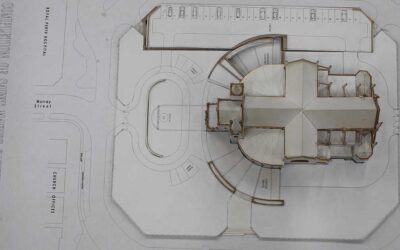Data Warehouses and Decision Support Systems; A Primer

Margot Note
Data warehousing is a method via which structured records are available to support business functions. Data warehousing arises out of an organization’s need for dependable, consolidated, unique, and integrated reporting and analysis of its data at different levels of aggregation.
A data warehouse is a repository of an organization’s electronically stored data, designed to facilitate reporting and analysis. Retrieval, analysis, extraction, and transformation of data and the management of the data dictionary are indispensable components of a data warehousing system. Data warehousing also includes business intelligence tools, and methods to extract, transform, and load data into the repository, and manage and retrieve associated metadata.
Data warehouses and other applications consist of a data repository, tools for analyzing the data, and a means of presenting the data to users. Decision support systems, whether geographic information systems (GIS), computer modeling systems, or systems that support decision making (such as dashboards that provide constantly updated information to executives about their organizations), also have a body of data analyzed by tools. It provides tailored information in some form of a report, such as a map, graph, or list of problems that need to be addressed. In some cases, the data is duplicative as in a data warehouse, but the data in an organization’s GIS may be the only place where that information is stored.
Business Analysis
Data warehouses contain data extracted from an organization’s operational or transactional databases or other sources and pulled together in one place for analysis. Data flows into a data warehouse and typically includes structured, semi-structured, and unstructured data. A data warehouse is a central aggregation of data that starts from analyzing what already exists and how it can be collected and later used. As a repository of organizational information, one question is whether data warehouses contain records or simply information or data. A data warehouse is an information asset by any definition, but to maintain records, it needs to maintain all the overhead necessary to document the records’ authenticity, reliability, integrity, and usability. In most cases, which would only slow down the process, which is all stripped away. One can argue that the data are transformed as part of the process and therefore are new and different records, but they do not represent new transactions.
Analysis Tools
A variety of tools can analyze the data. Data mining, for example, seeks to identify hidden relationships using statistical analysis and modeling tools. Data mining might be used to uncover the reasons behind the declining sales of a product or whether the demographics of the customer base are changing. Data mining would be used to look behind the new information about the changing use of email in relationship to text messaging and social media to predict the impact on advertising in the future.
The final part of the data warehouse is the user interface that allows users to query the application and get results. Here, accurate records are created as users get information that they can use to make decisions. Unfortunately, there are few good answers to how one maintains a clear and complete record of the process because one would need the final product, which is comparatively easy to create and preserve, the data used, and the tools employed. Using these applications, users often select what they want to analyze and the form the analysis will take. Not selecting all the right data to analyze, using the wrong tools, and setting the wrong parameters, can all affect the quality of the decisions. Data warehouses can be used in organizations to apply data to help decision-making and allow employees to perform more accurate, substantive, and consistent analysis.

Margot Note
Margot Note, archivist, consultant, and Lucidea Press author is a regular blogger, and popular webinar presenter for Lucidea, provider of ArchivEra, archival collections management software for today’s challenges and tomorrow’s opportunities. Read more of Margot’s posts here.
Never miss another post. Subscribe today!
Similar Posts
Cultivating a Community of Archival Practice: A Client’s Success Story
“We need a dynamic system that supports a consistent approach to managing the Perth diocesan collections across Western Australia…ArchivEra is already providing this with Catholic dioceses in Bendigo, Hobart, and Ballarat.”
Honoring Cultural Protocols in Archival Practice
Learn how archives can honor Indigenous cultural protocols, reframe stewardship, and move toward ethical, reciprocal, and community-driven practices.
Centering Sovereignty in Archives: Decolonial Approaches to Indigenous Knowledge
Margot Note explores how centering sovereignty in archives supports Indigenous rights, decolonial practice, justice, and cultural resurgence.
The Ethical Use of Born-Digital Materials in Archives
Born-digital records introduce complex ethical dilemmas involving consent, privacy, preservation, and access. Archivists must rethink ethical frameworks to navigate digital records’ dynamic, fragmented, and often personal nature.




Leave a Comment
Comments are reviewed and must adhere to our comments policy.
0 Comments